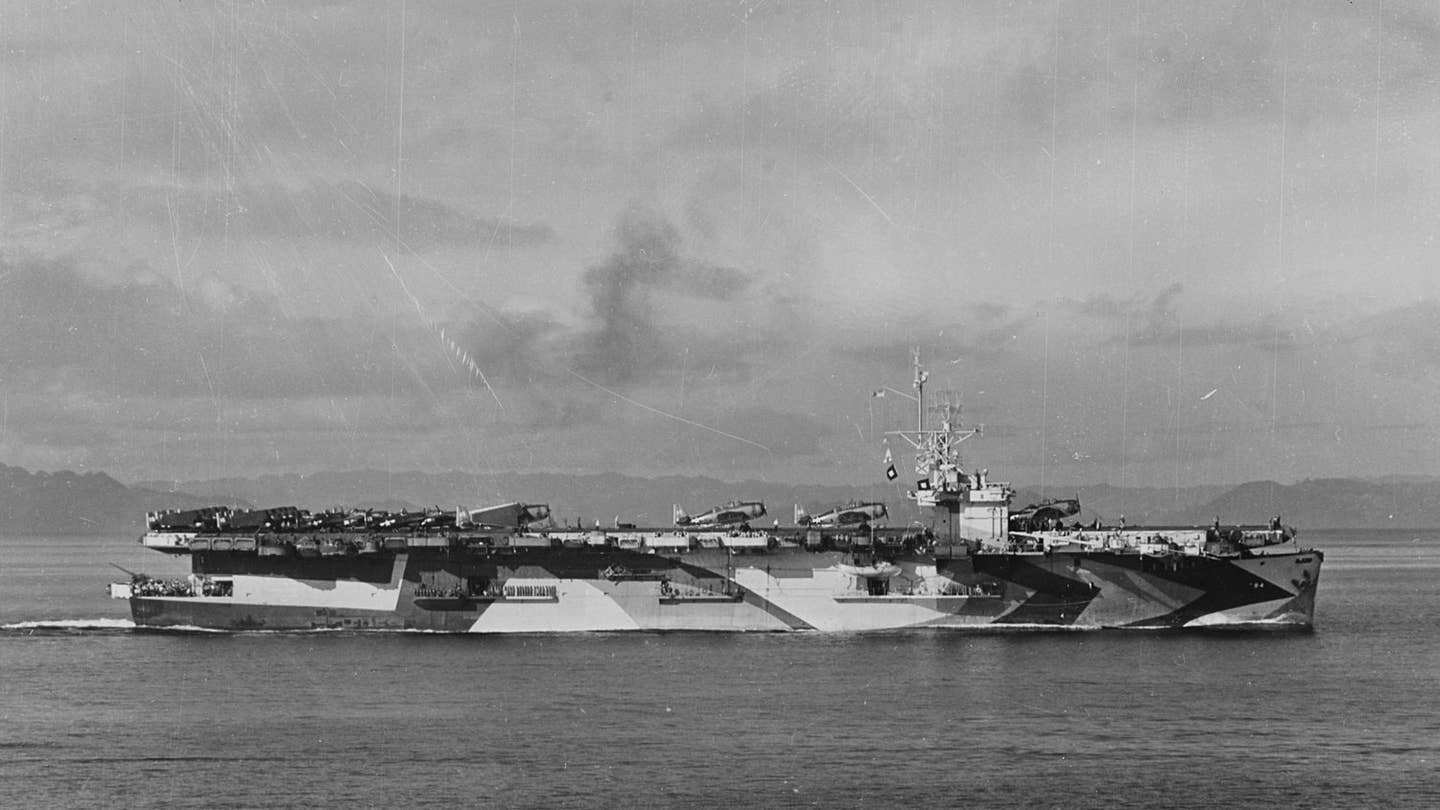This was the most popular carrier class in Naval history

USS Lunga Point
SUMMARY
The most populous class of escort carriers in history was the Casablanca Class. Builders cranked out 50 ships of the class in record time to escort convoys, assist in amphibious assaults, and more. But while the ships were popular with government buyers and planners, design compromises made them risky for crews.
The need for escort carriers
World War II brought on the modern era of naval combat, with planes fighting beyond visual range. Navies of the world adjusted to the new reality differently. In America, a slow transition between the wars became a quick turn after Pearl Harbor.
Carriers allowed the Navy to fight at longer range, scout more effectively, and strike much deeper against land targets than battleships. Crucial in the Atlantic, their aircraft hunted submarines with near impunity from the underwater threat. But carriers were needed everywhere while being expensive to build and operate.
Luckily, a solution was already in the water. The Navy found its "Aircraft Escort Vessels," relatively small vessels used for training pilots and transporting aircraft, were perfect for very specific missions.
They were smaller, slower, and less resilient than full-sized fleet carriers. But they still moved faster than most trade convoys and amphibious assault ships and could carry 20-30 planes. It wasn't enough for a full carrier battle, but plenty for one to two ships to protect a large convoy or provide air support to beach assaults.
The Navy re-designated aircraft escort vessels as auxiliary aircraft carriers and then escort aircraft carriers. And it ordered 50 ships of a new, custom-built escort carrier, the Casablanca class.
Casablanca-class escort carriers fitting out, circa April 1944.
The Casablanca class carrier
The Allied powers converted and built 130 ships to be escort carriers over the course of the war. And 50 of them were Casablanca-class escort carriers built in a rush by the hero of American shipbuilding in the war, Henry J. Kaiser.
Kaiser was best known for rapidly expanding America's fleet of Liberty Ships. But in January 1943, he promised the government 16 ships of the Casablanca class by 1944. Then he urged his workers to exceed that with the slogan "18 or more by '44," a bold goal they actually reached. Once it got going, the shipyard averaged almost an escort carrier delivered to the Navy a week.
The new escort carriers were 512 feet long, could sail 19 knots, and had a crew of 110 officers and 750 men. They carried up to 30 planes with a standard complement of 12 TBM Avenger torpedo bombers and 16 FM-2 Wildcat fighters.
This was a huge boon for military planners and the war effort. Casablanca-class escort carriers served at amphibious assaults across the Pacific, launching Navy pilots to victory in battles like the Gilbert and Marshall islands.
But the rushed construction came with costs.
Risk to escort carrier crews
In order to quickly build and commission the ships, the Kaiser shipyards used pre-fabricated components and welded sections of the hull that would typically have been held in place by stronger rivets. Experienced crews often looked at their "baby flattops" suspiciously, leading to nicknames like "Kaiser Coffins."
Some sailors played on the new CVE designator and called them “combustible, vulnerable, and expendable.” And, you know, they unfortunately were.
Commanders knew that all aircraft carriers were tempting targets and the escort carriers were particularly vulnerable. Officers tried to keep the escorts away from the fiercest of the fighting, but the enemy always gets a vote.
At the Battle Off Samar, a fight that was part of the larger Battle of Leyte Gulf, a Japanese fleet got the jump on a small task force with 16 CVEs and their destroyer escorts. Thanks to incredible valor by the destroyers and carrier pilots, the American fleet emerged victorious. But two escort carriers quickly sank in the short engagement.
The worst loss of life in a single ship came when a Casablanca-class ship took a torpedo to its weapons magazine. The Japanese submarine I-175 launched a torpedo against the USS Liscome Bay that blew through the thin skin of the ship and triggered explosions where 70,000 pounds of bombs were stowed. A captain on another vessel saw it happen.
“The first indication of the hit was a bright quick flash of fire, followed within two or three seconds by a great explosion and towering mass of fire which seemed to engulf the ship and brilliantly illuminated the surrounding area. This column of fire rose to a height of several hundred feet carrying with it burning wreckage and fragments which showered down into the sea for several minutes on all sides. A second heavy explosion was seen and heard about twenty seconds after the first…. When the cloud of fire lifted from the ship she was seen to be a blazing wreck with fires raging throughout her structure.”
The ship sank in just 23 minutes and took 644 sailors with it.
At the Battle of the Bismarck Sea, another CVE quickly went down after a kamikaze hit. The commander ordered abandon ship just 20 minutes later, and the ship sank in two hours with 318 sailors.
SHARE
